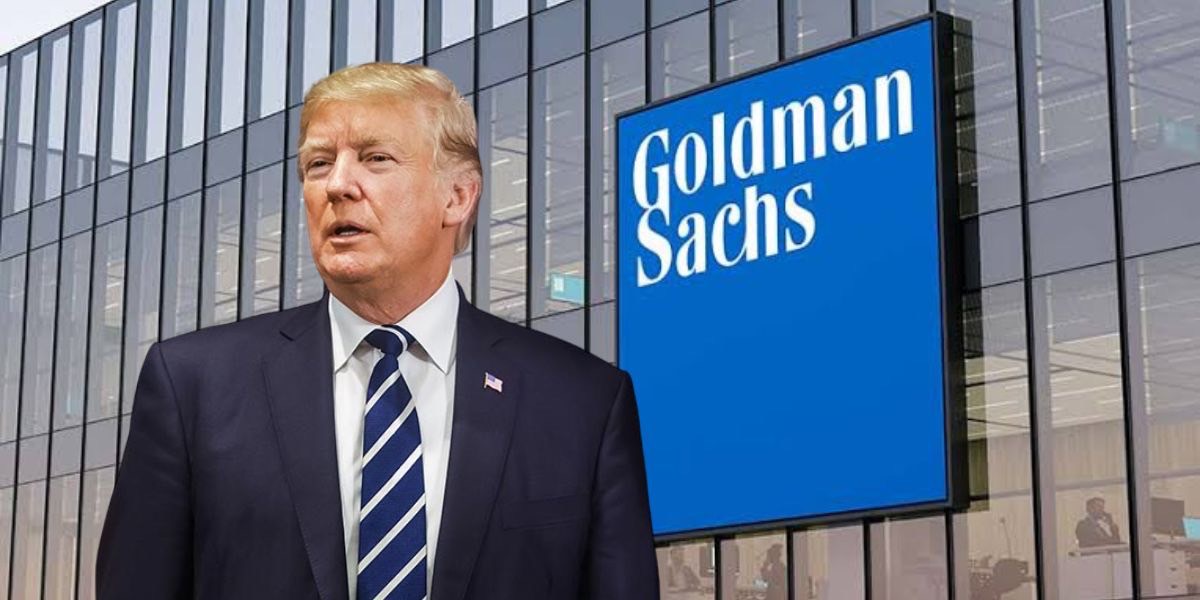The carefully laid plans of across-the-board tariffs by the U.S. President Donald Trump and his administration were blocked by the Federal Court, sparking hopes for U.S. trading partners for lower to none reciprocal tariffs. However, those sparks were short-lived as leading investment bank Goldman Sachs pointed out several ways for the Trump administration to continue collecting import tariffs through other tools.
A three-judge panel on the Court of International Trade issued a summary judgment against the tariffs, some of which were referred to as “Liberation Day” tariffs. The court ruled against them on several key grounds.
The court ruling blocks a substantial portion of tariffs imposed under the International Emergency Economic Powers Act (IEEPA). This decision blocks tariffs that account for 6.7 percentage points (pp) of the tariff increases implemented since the beginning of the year.
The tariffs specifically affected by the ruling include the 10% baseline tariff, which represents 3.6 pp on the effective tariff rate. Also blocked is the additional 20 pp tariff on imports from China, accounting for 2.7 pp, and the 25% tariff on non-USMCA-compliant imports from Canada and Mexico, worth 0.4 pp. All these specific tariff actions relied on the authority granted by the IEEPA.
However, the ruling does not affect sectoral tariffs. Importantly, it should have no impact on tariffs previously imposed under Section 232, such as those currently in place on steel, aluminium, and auto imports, which amount to 2.7 pp. Furthermore, the court’s decision is not expected to hinder the Trump administration’s ability to impose other sectoral tariffs using Section 232. Goldman Sachs suggests that if all pending Section 232 investigations result in 25% tariffs, this could potentially add another 4.9 pp to the U.S. average effective tariff rate. Uncertainty surrounding the IEEPA-based tariffs could even lead the White House to place greater emphasis on sectoral tariffs, where there is considerably less legal uncertainty.
The court’s ruling gives the administration a deadline of 10 days to halt the collection of the blocked tariffs. However, the decision makes no provision for refunds of tariffs that have already been collected.
In response to the ruling, the Trump administration has already filed an appeal. This appeal has been lodged with the U.S. Court of Appeals for the Federal Circuit. While it is possible for the case to be appealed further to the Supreme Court, decisions from these higher courts are considered unlikely within the 10-day period given by the CIT.
Goldman Sachs stated that despite this legal setback under IEEPA, the administration possesses other legal authorities that it could potentially use to impose tariffs similar to those the court has struck down:
- Section 122 of the Trade Act of 1974: The court noted that the President could use this authority to impose tariffs of up to 15% for a maximum of 150 days. This authority is intended to address a balance of payments deficit or to prevent an imminent and significant depreciation in the dollar. A key feature of Section 122 is that it does not require any formal investigation or process, meaning the administration could theoretically replace the blocked 10% tariff with a Section 122-based tariff within days if deemed necessary. However, the law is unclear on whether the 150-day period could end and then quickly restart.
- Section 301: This authority can be used to address unfair trade practices. The U.S. Trade Representative could rapidly launch Section 301 investigations on key trading partners, thereby laying the procedural groundwork for imposing tariffs after the investigation is complete. This process would take longer than using Section 122—likely requiring several weeks at a minimum, and potentially a few months to complete multiple investigations. A significant aspect of Section 301 is that there is no explicit limit on the level or duration of tariffs that can be imposed.
- Section 232: As mentioned earlier, this authority, already used for steel, aluminium, and autos, could be broadened to cover additional sectors. With less legal uncertainty compared to IEEPA, the White House might indeed give more attention to sectoral tariffs under Section 232.
- Section 338 of the Trade Act of 1930: This authority allows the President to impose tariffs of up to 50% on imports from countries deemed to be discriminating against the U.S. This authority, which is similar to Section 301 but limits the tariff amount, has never been used. It also does not require a formal investigation.
Expected Next Steps
Given the unlikelihood of winning an appeal within the 10-day timeframe, sources suggest that the White House will likely announce a similar across-the-board tariff using the Section 122 authority. This action would provide the administration with time to initiate a series of Section 301 cases against larger trading partners. Such a strategy could potentially allow for the imposition of tariffs higher than 10% in some specific cases.
However, it seems improbable that the administration could complete Section 301 investigations on every U.S. trading partner within the next several months. Therefore, if the court’s ruling against the IEEPA-based tariffs ultimately stands, it could mean that smaller trading partners—or countries with smaller trade surpluses with the U.S.—might not face a baseline tariff once the 150-day period for Section 122 tariffs expires, assuming the Trump administration cannot find a legal way to extend them.
Goldman also noted that the decision is not expected to have a major impact on the fiscal package. While the ruling represents a setback for the administration’s initial tariff plans and increases uncertainty, the availability of other legal authorities suggests that the final outcome for most major U.S. trading partners might not ultimately change.





